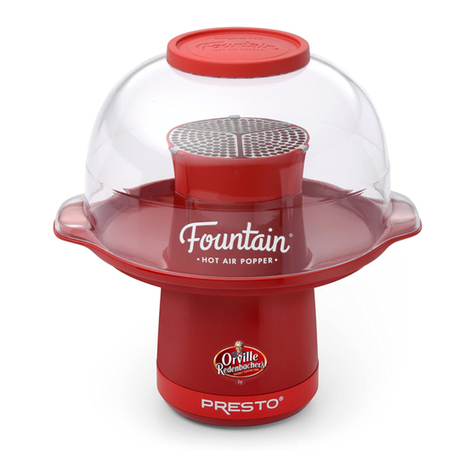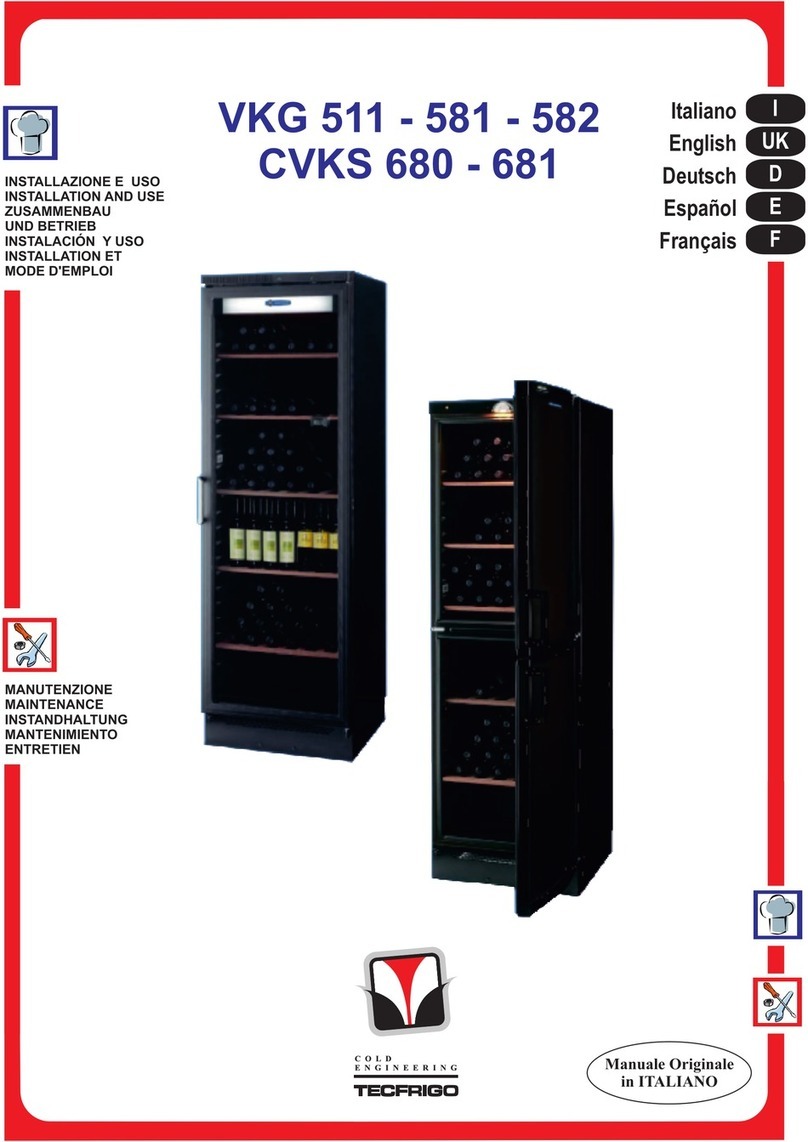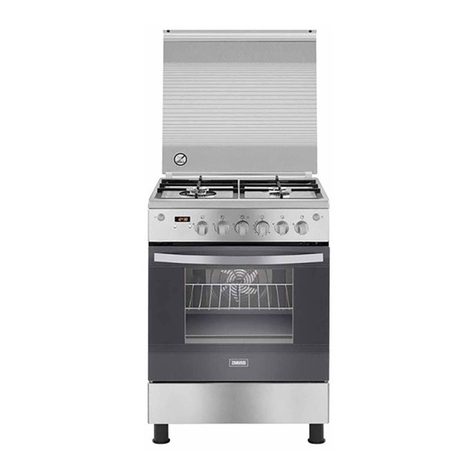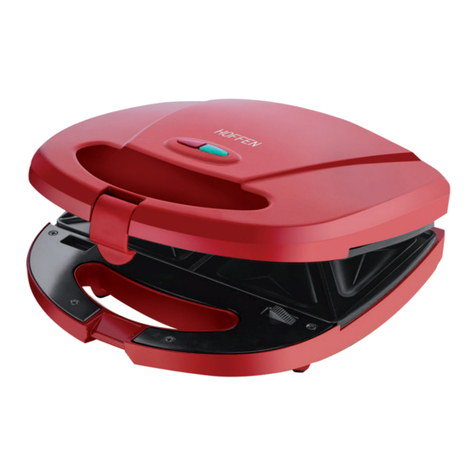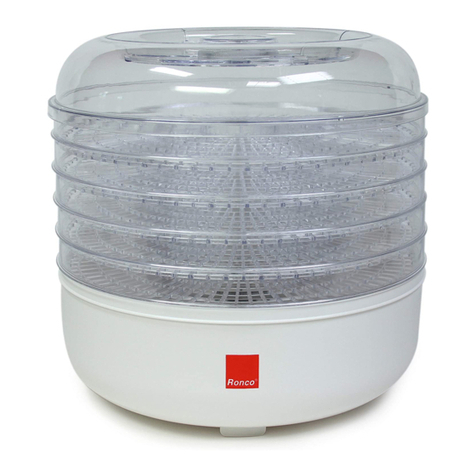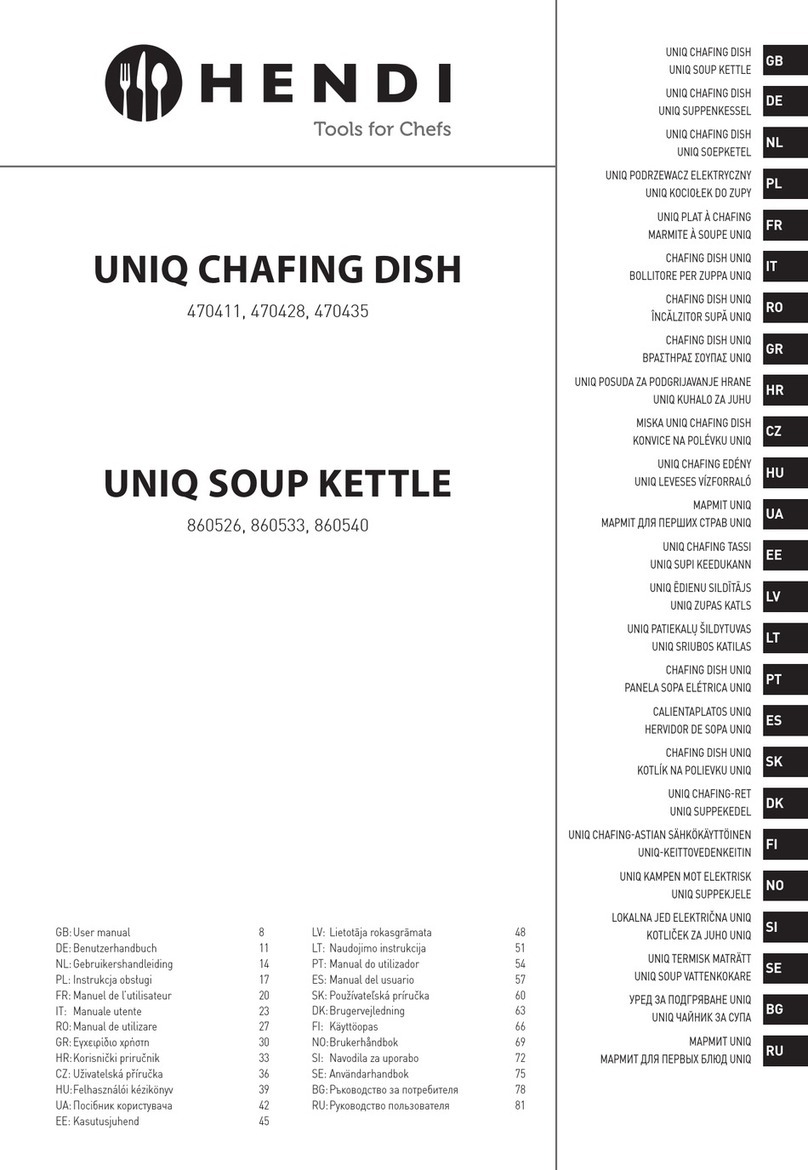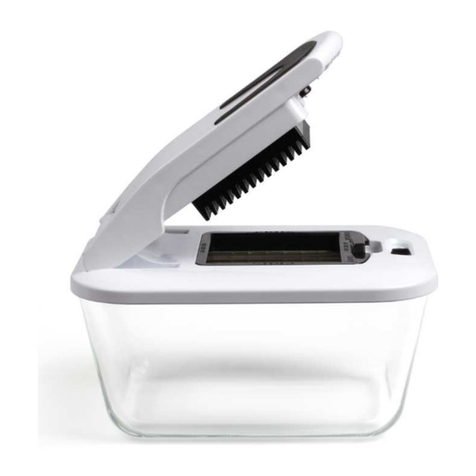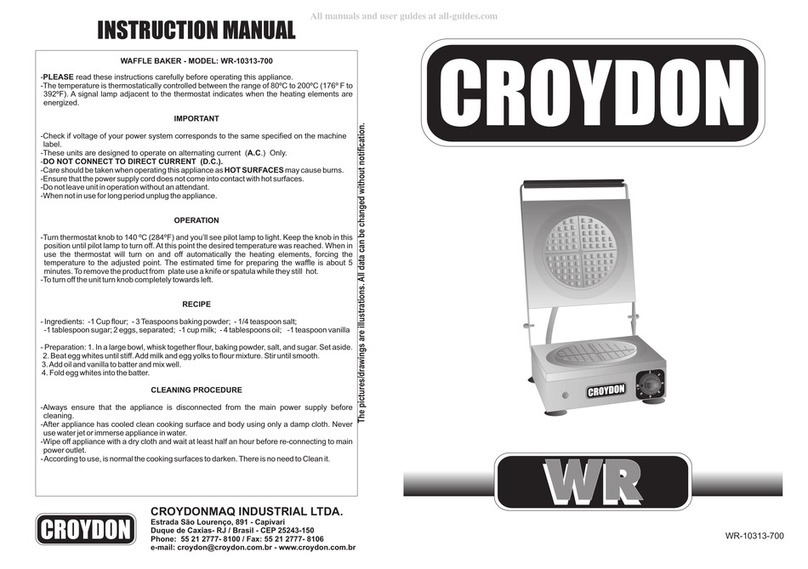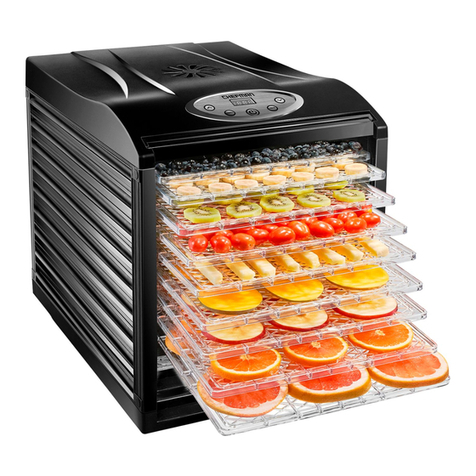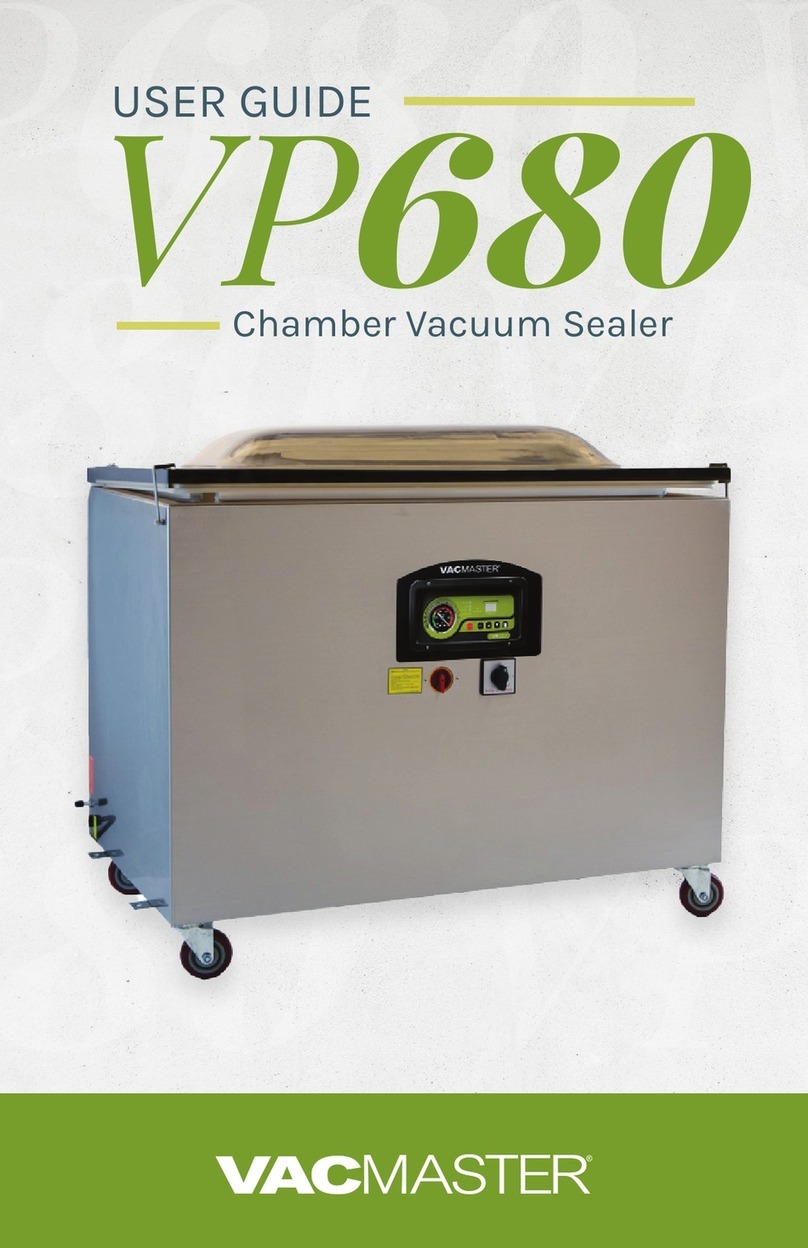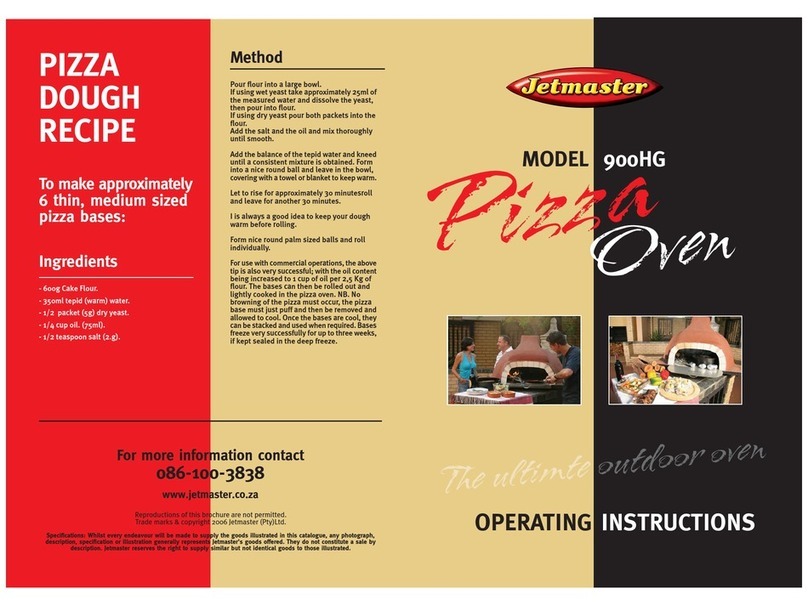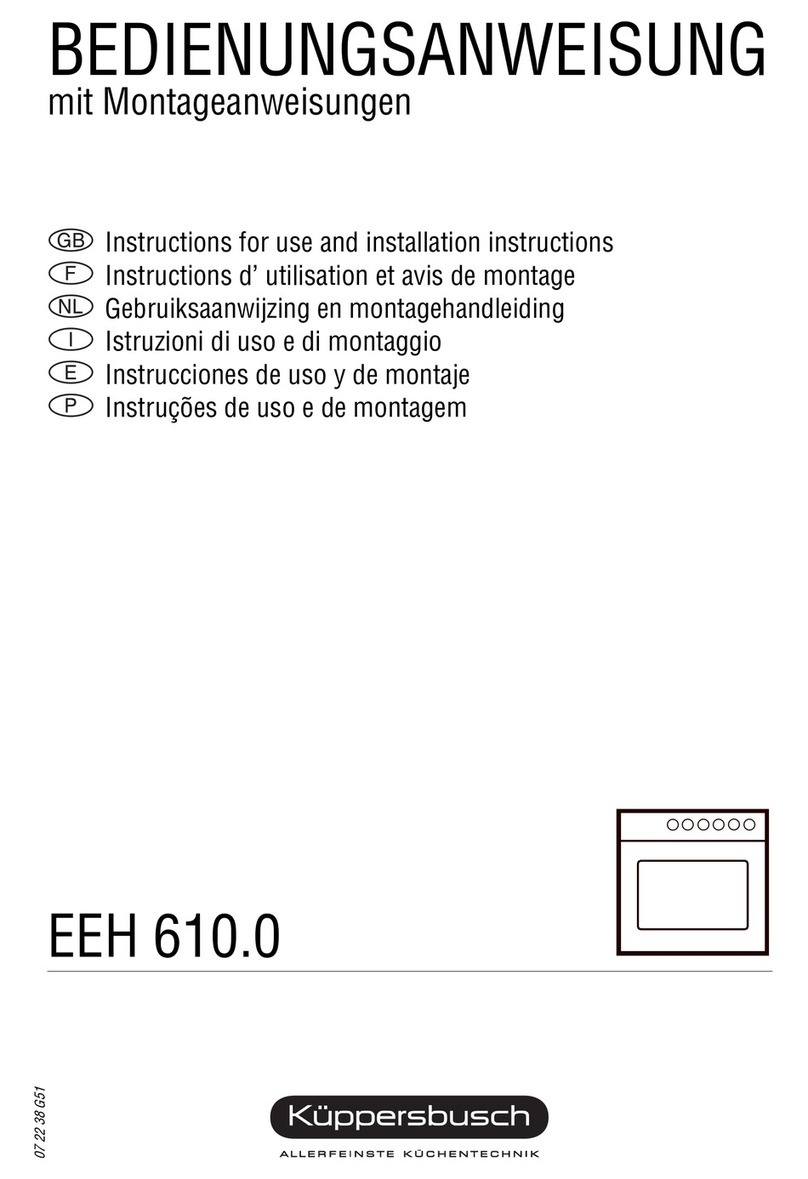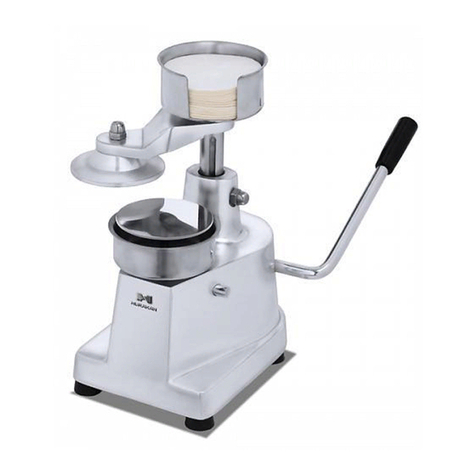
Italiano English Fran Deutschçais
8
IMPORTANT (Fig.2)
UNIT SHOULD STAND FOR AT LEAST 1 HOUR BEFORE SWITCHING ON.
1. Set LAMPO in position required. Ensure vents have 15cm space on both sides as LAMPO
needs good airflow circulation to operate.
2. Ensure plug reaches power point but DO NOT SWITCH ON!
3. Pour the recommended amount of glycol in the basin, (3 parts for Lampo 3 - and 2 parts for
Lampo 2) by removing the front lid (which is the one with the bottle holders)..
4. Ensure BATH FILL LEVEL is not exceeded.
5. Plug unit into 13 amp power point and switch on.
6. Allow to run for 4 hours before initial use, as this allows the fluid to be chilled to the required
operating temperature (approx. -30 - 35ºC). However, this may vary when the thermostat cuts
in and out depending on ambient temperature.
HOW TO USE LAMPO
LAMPO incorporates a timing device.
THE TIMER DOES NOT SWITCH THE UNIT ON AND OFF THE TIMER IS PURELY TO
INDICATE THE TIME THE BOTTLE IS SUBMERGED IN THE FREEZING FLUID.
WARNING:-using the LAMPO without activating the timer reminder could lead to the contents
of the bottle freezing and/or breaking.
1. Place bottle in LAMPO.
2. Press the appropriate button to start the timer. It flashes during operation. If you want to
cancel or start again, press RESET Button
3. When the cycle has ended, an audible buzzer will sound. Press RESET button to de-activate
the flashing light and buzzer. You must now remove the bottle.
4. The bottle will have cooled to the desired temperature at the rate of 2 degrees per minute (it
will take longer if the ambient temperature exceeds 18 °C).
IMPORTANT NOTES AND RECOMMENDATIONS FOR CHILLA USE
1. Do not leave bottles in the Lampo unit after the buzzer has sounded as the bottles will
freeze.
2. Do not submerse your hands in the bath. (Operating temperature is -30ºC)
3. If you need to move LAMPO, it will be necessary to turn off for 4-6 hours and to drain the
contents first into a shatterproof container, i.e., plastic container such as a bucket using a jug or
similar to scoop out contents.
WARNING
THIS UNIT SHOULD NOT BE USED BY CHILDREN. IT IS IMPORTANT TO AVOID CONTACT
WITH THE GLYCOL MIXTURE DURING OPERATION OF THE UNIT DUE TO THE
EXTREMELY LOW TEMPERATURES MAINTAINED DURING NORMAL OPERATION.
GENERAL GUIDANCE
1. CHECK LEVEL OF FLUID REGULARLY.
If freezing occurs around the bars, then it will be necessary to add pure glycol. It may also be
necessary to remove some of the fluid before topping up with pure glycol.
2. CHECK BAGS REGULARLY.
Check bags to ensure that no leaks have been sustained. If any bags are torn, these must be
replaced immediately.
3. KEEP THE MACHINE EXTERIOR CLEAN WITH A WARM DAMP CLOTH DO NOT USE
ABRASIVE CLEANERS. Care must be taken when cleaning around the timing device and
indicators, not to use excessive amounts of running fluids, as this may damage the timing
device.




